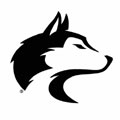


How did Suzanna Darcy-Hennemann, ’81, end up in a job that involves forcing jumbo jets to stall in mid-air, take off with only one engine, and hurtle toward the ground at nearly the speed of sound? “I just kept applying for it,” she says. Darcy-Hennemann was the first woman ever hired as a test pilot at Boeing, and now has 20 years of experience flying experimental and production models of new planes. As senior test pilot on the 777 program and lead test pilot for the new 777-200LR (“long range”), she spent the past year putting one of the world’s largest jetliners through every imaginable trial, including a world-record setting 24-hour nonstop flight from Hong Kong to London. The job isn’t as dare-devilish as it sounds, she says. The company’s engineers, designers and builders are so meticulous, and the testing process so incremental, that by the time she tries anything really hair-raising the risk has been all but eliminated. “I mean, there’s a risk getting out of bed in the morning,” she says. “I think that everybody has someplace where they’re home, someplace where they’re very comfortable. And what’s comfortable for one person is uncomfortable for another. Flying is my home.” The night before her first flight in the 200LR, she says, it was her husband who lay awake worrying. “Poor guy. I slept like a baby.” [Photo Courtesy of Boeing.]
Nobody Here but Us Trees

Amazing, isn’t it, how inconspicuous the world’s tallest animal can make itself? In Vanishing Act (Bulfinch Press), the latest coffee-table volume from nature photographer Art Wolfe, ’75, even the giraffes are chameleons. Wolfe spent several years traveling the world in search of animals with what he calls “obliterative coloration” —an effort that presented some obvious challenges. When shooting his subjects, he worked to preserve their natural camouflage by avoiding many of the techniques nature photographers use, such as centering and selective focus. The result may be the first book of art photography that doubles as a party game—a sort of “Wild Kingdom” meets Where’s Waldo? It may also be the first book to give an accurate sense of what a sambar deer sees in the moments just before it’s eaten by a Bengal tiger: nothing out of the ordinary. [Photo Courtesy of Bulfinch Press/Time Warner Book Group.]
The Apprentice’s Apprentices
It’s no longer safe to assume that UW undergrads chattering about “The Apprentice” are neglecting their homework. They might be doing it. Since the spring of 2004, UW Information Systems Lecturer Laura Schildkraut has been teaching a business course based on the popular TV show. She breaks the class into teams and gives them the same assignments that the show’s contestants receive from Donald Trump or Martha Stewart. Schildkraut says she understands those who view reality TV with suspicion—particularly as a teaching tool. Before seeing the first season of “The Apprentice,” she was one of them. “But I watched the first episode,” she says, “and I thought, ‘Well that was kind of interesting.’ And then I watched the second one and I was hooked. I just found it really compelling. And by the fourth one, I was sitting on the couch with a pad on my lap and a pen in my hand, writing down a list of questions for a group of students I didn’t have.”
About 3,300 alumni and fans voted for their favorite UW mascot or logo in September (see “Going to the Dogs?” Sept. 2005), and for this group, the winner by far was the 1995 rendition of a Husky with a block “W” in the background (left). This logo got more than 1,000 votes, and in second place was the other 1995 design—the same dog over a “UW” background. However, a student vote held during Homecoming resulted in a virtual tie between the current Husky design created by Nike (right) and the 1995 logo at left. Out of 770 votes, the current Husky got 206 for first place while the 1995 design got 198 for second place.
 |
 |
SOUNDBITE
“A four-year degree is at the top of the list.”—Microsoft Chairman Bill Gates on the number-one qualification for getting a job at his company. Gates made the remark in a live interview with UW President Mark Emmert, ’75, held during a conference of state legislators in Seattle. In his introduction, Emmert said it was ironic that a university president would be interviewing “the world’s most famous college dropout.”